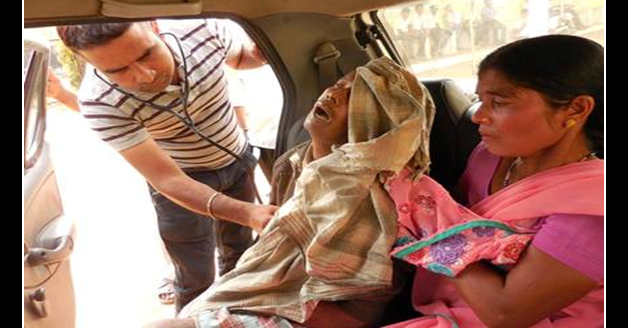Notebandhi: The Unending Road to Nirvana

NEW DELHI: Prime Minister Narendra Modi's controversial demonetisation has led to consequences he and his advisors did not expect. Thus the timeline for the coming of normalcy keeps increasing. First, Finance Minister Arun Jaitley spoke of a critical 3 week period, after the currency loss caused by the 86% demonetisation would decrease. That didn't happen.
Speaking in Goa on November 13, PM Modi asked people to bear with the negative fallout of notebandhi for 50 days till December 30.
Now speaking in Ahmedabad he asked for yet another extension as the "path to normalcy would be gradual and slow even after the 50 days that he had sought ...(to) end on December 30. (Sunday Times).
The Economist, December 3-9, 2016 spoke of India's currency loss, as "Modi's bungle," by terming his mistakes as based on "the innate sense he has of his own infallibility and his misplaced faith in his technocratic skills. By designing a scheme that was needlessly callous and which is becoming increasingly unpopular, he has squandered political capital." Strong words but more follow. In a later article of the same issue of the Economist, "India's clumsy monetary reform puts its economy and institutions at risk," argues that the demonetisation "is both extraordinarily blunt and risky. Demonetisation will probably make only limited strides in shrinking the black economy while affecting all of India's 1.3 bn citizens, the poorest most of all."
The cash shortage is leading to under consumption and thus shortage of aggregate demand reflected in sharp decline of sales especially in essential commodities. This is leading to a noticeable fall in employment in the informal sector and in the trading and industrial sector. Industrialists like Ratan Tata and Adi Godrej are worried about the economic situation, and the business lobby Assocham has expressed concern in the drop in employment. The major question that the foreign media has raised is about the efficacy of income tax raids and digital methods. After demonetisation, the All India Bank Officers Confederation called for RBI Governor Urjit Patel's resignation.
Now, the Income Tax Employees Federation and the Income Tax Staff Association pointed out on December 8, that "personnel and infrastructure are severely short...The entire department is totally demotivated due to the huge shortage of manpower in lower cadres and huge stagnation in officers' cadre." And "30-35% vacancies at cutting edge positions, like Additional and Deputy Commissioners though the policy makers have been strongly advocating e-governance and e-communication, the Internet and Intranet connectivity is still poor." Considering that there are plans to raid some 40 lakhs tax assesses depositing over ?2.5 lakhs income, it is very clear that the Income Tax Department cannot handle such a burden.
Most economists believe that the cash element in the black economy is less than 5-7%. This money is stored in tax havens like Singapore, Dubai, the Cayman Islands, Panama, etc. But relatively little black money has been recovered from there. There are two major problems. Firstly, black money is a flow. In the circulation process of money and capital, black money becomes white money, and so on. Black money is also invested in real estate, jewellery, shares etc. and so rarely hoarded.
How much black money is there? Prof. Arun Kumar of JNU argues that it is very high as it affects 97% of the population, this is not the extent but cumulative impact of the black economy.
Based on the World Bank figures, that estimated the black (shadow) economy to be 22.2% in India, most economists believe it is in the region of 25-30%. But the significant amount of black money in tax havens would increase the total, maybe to 35-40%. Many economists may find this high. In any case, the amount of actual cash recoverable is much less than the PM and his advisors thought.
The question arises, as the media has raised was this move political? It appears so.
From November 8 onwards PM Modi has made it a personal crusade. The fight against a claimed 70 years of black money is solely PM Modi's fight. The arithmetical problem of August 15, 1947 to November 8, 2016 includes Modi's term of 2 1/2 years from mid-2014.
Most shocking is the absence in his rhetoric of the role of the RSS founded in 1925, the founding of the Bhartiya Jana Sangh by Shyama Prasad Mookerjee in the 1950's, the Janata Party period in which LK Advani and Atal Bihari Vajpayee were prominent, and later BJP-led governments headed by Vajpayee with LK Advani in prominent positions.
So PM Modi's rhetoric is completely political and personalised. GDP growth hasfallen according to the RBI, for this financial year from 7.6% to 7.1%. Fitch, Moody have also decreased growth rate predictions. Other macro economic trends are also bad, as several Indian economists likeProfs. Amartya Sen, Deepak Nayyar, former PM Dr. Manmohan Singh,Prabhat Patnaik, former Finance Minister P.Chidambaran, Utsa Patnaik,among many others have argued in their critiques.
Importantly, many of them have pointed out that this demonetisation wasunnecessary. The economy was doing fine chugging along with a high rate of 7.6% of GDP growth. So the economic distress and the fall likely in economic indicators, is policy induced by a Prime Minister who is recklessly seeking a political advantage in the 2017 electionsenough to provide sufficient momentum to the General Elections in 2019.
As the Economist concludes in its article on "India's clumsy monetary reform.." cited earlier, 'Managing an economy's money is among the mostImportant tasks of the government. Clumsy use of monetary instruments comes with high risk. John Maynard Keynes, an economist, was echoing Lenin when he wrote in 1919, "There is no subtler, so surer means of overturning the existing basis of society than to debauch the currency."
(The writer is a senior Professor in Jawaharlal Nehru University)
(Cover Photograph: This photograph is taken from Dainik Rashtriya Ujala, of grieving relatives of a man who died while standing in the queue outside a bank in Gurur district of Chhatisgarh)



